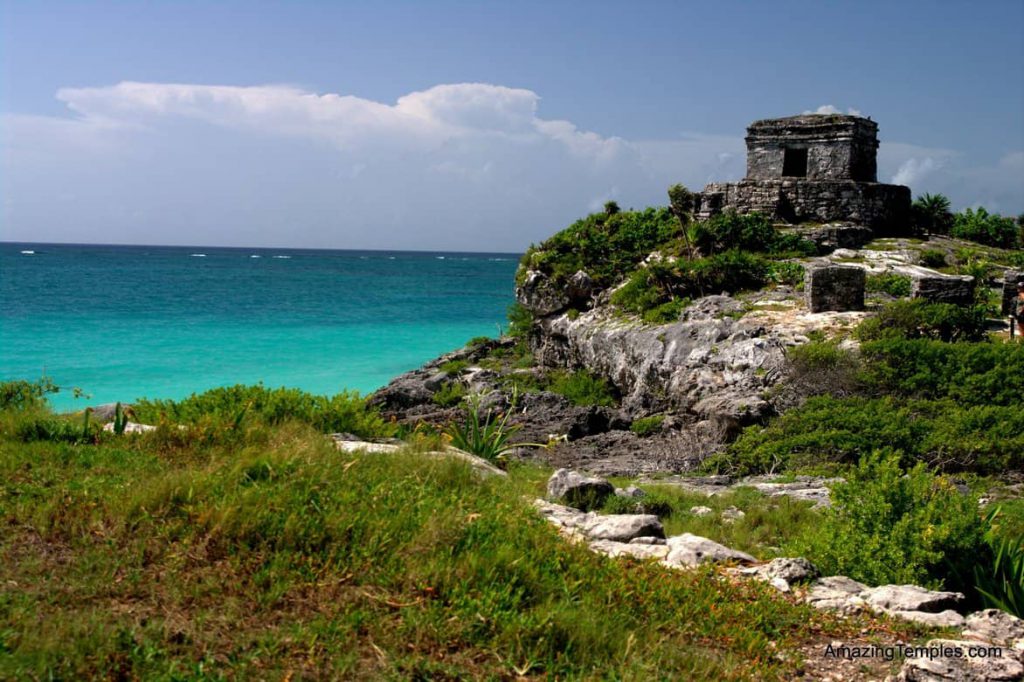Tulum is a small but fast growing village 2 hours south of Cancun at the Riviera Maya on the Yucatán Peninsula in México. The main village with it’s 15000 inhabitants is about 2 km distant from the beach, where hotel beside hotel were build along the sea for nearly 7 km. Only few hundred meters away from the coast line in the turquoise colored sea is the Mesoamerican barrier reef located.
This Caribbean coral reef is the second largest reef in the world. It saves the beaches by breaking the high waves in a distance. Many people come here to explore the under water world. But Tulum is not only a tourist center for sun fanatics and divers. North of the village you can find the very interesting ruins of the ancient Mayan city of Tulum.
Tulum was founded quite late around 1200 and belongs to the late post-classic period in Mayan history. Jade, Obsidian and other findings show that Tulum was an important trade post at the Caribbean cost.
The area that was covered by this trading system was the whole Central America. It was still inhabited when the Spanish arrived. The Spanish chaplain Juan Diaz, who accompanied the Grijalva Expedition to México in 1518, compared Tulum with his Spanish home town Sevilla: “….a town or village so large, that Sevilla could not be better or larger; and in it could be seen a very large tower…”
The site, located on a sea cliff, is surrounded on three sides by a stone wall, that gave the ruins it’s name. Tulum in Mayan language means wall. The height of the wall is between 3 and 5 meters on the land-side. The original name of the site might have been “Zama”, what means “City of the Dawn“.
The most important and famous buildings in Tulum are El Castillo, the Temple of the Frescoes, and the Temple of the Descending God. The Temple of the descending god might have been the tower described by Juan Diaz.
South of the modern village of Tulum begins the natural reservation of Sian Ka’an. Sian Ka’an is world heritage of the UNESCO. Official tourist offices offer the possibility to visit this spectacular natural habitat. With some luck you can watch Jaguar, Puma, Tapir and Caribbean Manati here.
Several big Cenotes can be visited in the region near Tulum. They are perfect places to swim in fresh water or to explore the underwater world by diving. In addition, Tulum is a good starting point to visit Coba, a very big city of the ancient Mayas. Even a trip to Valladolid in Yucatán to visit the Mayan site Ek Balam could be considered because the street from Tulum to Valladolid is very new and in a perfect condition. Driving time is 2 hours.
I recommend to visit Tulum on a week day and very early in the morning because big amounts of tourists carried in buses from Cancun and Playa del Carmen will arrive during the day. During the weekend you will face local visitors in addition. For people who are interested in taking some nice, tourist-free photos, only the early morning is a good time.
Please keep in mind, that the east coast of Yucatán is the entry point of hurricanes. The probability, that a hurricane hits Tulum is increasing during the hurricane season in autumn. Best time to travel there is the winter and spring time.

